The Relevance of Article 29 of the Belgic Confession for Today
The Relevance of Article 29 of the Belgic Confession for Today
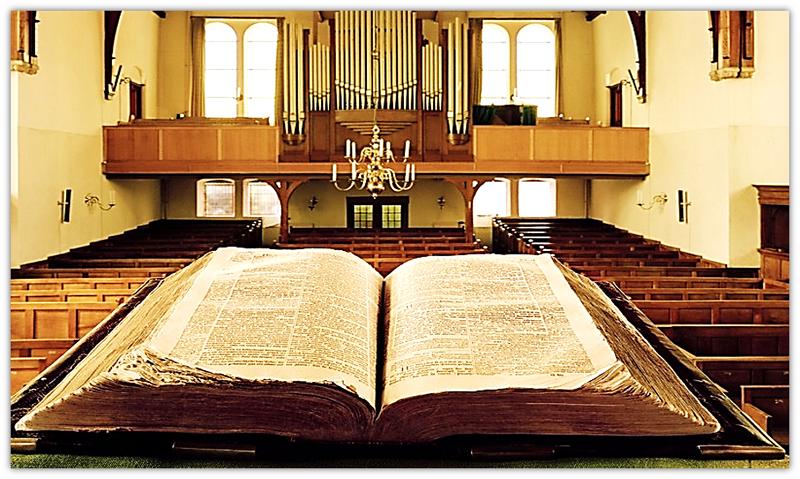
In the GKv version of the Belgic Confession of Faith (BC) article 28 has the title “The Calling to Join the Church.”1 We learn from K. Schilder that looking for the true church is a matter of the obedience which the Lord asks of us in his covenant. It is not without reason that article 28 closes with a reference to the “ordinance of God”. Over against the subjectivism of his time, the (young) Schilder correctly urged that one’s starting-point must be “the demand of obedience” and not “the factual situation” (i.e. the many churches). God’s will is that we as believers preserve the unity of the Spirit (Eph. 4:3), form “one body” (1 Cor. 12:12), continue in “fellowship” (Acts 2:42).
Choosing the right church is an act of deliberate obedience. In Schilder’s wake it is important to be reminded of this. The choice one makes is not to be determined by personal preference: “I feel more at home in that other congregation. There is more warmth there. The way people experience their faith there is similar to the way I experience it.”
This man-centred approach is wrong. We need to take a God-centred approach and, with article 28, must take our starting-point in the calling that comes to us from God. God gives us a command. The Lord calls us to look for his church, to practise the communion of saints and to serve the edification of the brotherhood with our gifts. The decisive question is not: where am I most at home? The decisive question is: what does the Lord require of me? How can I show, in the way I choose a church, that I want to be obedient to his command? In our egocentric society I think we do well to remind each other of what the confession teaches us about obedience, also where it concerns the church we choose.
The Guide⤒🔗
It is this question which article 29 responds to. This article presumes that the church of Christ can be found by us. It requires “precision” and “great carefulness” on our part, but God’s Word ought to guide us in this. When we allow ourselves to be led by that Word, we can discover the true church among the sects that outdo each other in their claims to be the church of Christ. While much is false (i.e. counterfeit), it is both possible and mandatory to find the true (i.e. real) church!2 For there are marks by which that real church may be recognized. These marks are clearly indicated by God’s Word and thus mentioned in article 29. The way in which the confession formulates this, makes clear that these are not accidental matters (a good sermon, a beautiful administration of baptism), but structural matters. The pure preaching of the gospel and the pure administration of the sacraments must be “maintained,” this must be practice, while church discipline must also be “practised” to punish sin. For the Scripture proof I refer to the texts listed below article 29. The three marks listed in article 29 may be considered a further specification of what the reformers considered typical of the church of Christ: listening to the voice of the Good Shepherd (cf. John 10:3f.).
Anabaptists←⤒🔗
The Anabaptists considered the piety of the congregation central. In contrast, article 29 suggests criteria which might be considered more ‘objective’ and ‘structural’, although it is not silent on what characterizes the members of Christ’s church by explicitly listing “the marks of Christians.” These more ‘objective’ and ‘structural’ marks are more useful than the ‘subjective’ marks of the Anabaptists. For who can measure the piety of a congregation? Moreover, a church might not be perfect and yet be a congregation of Christ; think, for example, of the congregation of Laodicea (Rev. 3:14f.).
When it comes to choosing a church, article 29 – following what Scripture says about “the true (real) church” – continues to be relevant and useful as a guide in our time. This article may serve as a vantage point from which to view our own church and other church communities about us. Here we find the criteria which a church community must meet, if she is to bear the name ‘church of Christ’ rightfully. It is a good thing that K. Schilder taught us to take our own confession seriously, also where the issue of the church is concerned. It can help us not to take man as our vantage point, as so often happens today.
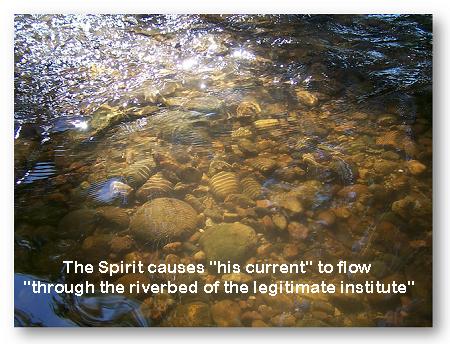
(Historical) Legitimacy←⤒🔗
We saw how Schilder not only referred to the confessional three marks to find Christ’s church, but also gave a role to the history of the church. Christ draws a line through that history. Schilder argued that the church “is founded on history and confession.” The Spirit causes “his current” to flow “through the riverbed of the legitimate institute.” Schilder connected the normative (i.e. the three marks) with the historical (i.e. the riverbed of Christ’s church-gathering work). I have noticed that this connection has received little attention when Schilder’s doctrine on the church is described. As far as I can see, this is an essential thought on the basis of which Schilder concluded that the “true church” is the “legitimate church”. Thus, he spoke in an exclusive way when considering the question: which church community in The Netherlands is the church of Christ?
It is noteworthy that in our churches this line of Schilder’s teaching was not consistently applied. Soon after the Liberation in 1944 our synods recognized the Christelijke Gereformeerde Kerken (CGK) as churches which “want to stand with us on the foundation of Scripture and confession.” In the interchurch discussions that followed, our deputies – I was there myself – declared that our churches see the CGK as churches of Christ.
It was not considered necessary to make a judgment about the past, such as the fact that the CGK refused to participate in the Union of 1892. “Self-willed separation” was not discussed. The CGK met the three confessional marks, the matter of historical legitimacy was not an issue.
In addition, it is impossible to allow history to play the important role which it played in Schilder’s days. Every year there are new church communities in The Netherlands. One need only think of the many ethnic churches in the Bijlmer,3 the so-called free congregations and the many varied evangelical congregations! The problem is not just “ten-times-reformed,” it includes the large number of other church associations.
A. L. Th. De Bruijne has argued that we apply the confessional marks 'without adding other directive criteria: for example, the legitimacy of a church in the light of history...' 'Scripture makes clear that the Spirit moves in many ways. He can continue his work in other places unexpectedly, in a manner which does not fit into our schemes. The continuity of his work in history does not always coincide with a line that we can clearly trace through that history.'
I think this is worth reflecting on, all the more because Schilder himself always asked attention for what Christ can do elsewhere. While we may not bypass Christ’s work in the Secession, the Union, and the Liberation, this does not imply that his church-gathering work is limited to those reformations and can only continue in that specific riverbed. We must admit that we simply cannot oversee it all in The Netherlands today and must be more humble when speaking about the “line which Christ draws through history.” What do we know of other ‘lines’ which He may be drawing in, for example, the Bijlmer? May we identify the history of our own churches with the line of Christ as Schilder did? What would this mean for what Schilder referred to as the “breadth” (and “movement”) of Christ’s church-gathering work?
With De Bruijne I would therefore plead for an application of the marks without the issue of (historical) legitimacy. Article 29 does not mention this either. Our fathers in the sixteenth century did not argue about the legitimacy of the Lutheran churches. They did argue over certain differences in doctrine which, according to some, could not be bypassed in view of unity.
The False Church←⤒🔗
We have already seen (in an earlier article) how J. Douma and C. Trimp warned against a generous use of the label ‘false church’. I would consider this warning correct in view of what article 29 says of ‘the false church’. ‘False’ here means ‘counterfeit or ’fake’, in the same way we speak of ‘false teeth’. In the sixteenth century the reformers applied this characterization to the Roman church, to the Jewish religion, to Islam, and to Anabaptist sects. Calvin referred to the papacy as “a hellish synagogue”, Luther even spoke of “the whorehouse of the devil”, even though they did not deny that there are “remnants of the church” within Rome. While these sounds are not heard in our confession, article 29 does teach us that the designation ‘false church’ is pregnant with meaning. It makes clear that a deep denaturalization has taken place of what should be the church of Christ. Church communities which fall short with respect to the pure preaching and administration of the sacraments need not necessarily be considered ‘false churches’ in the way our confession speaks of them. I point to what article 29 also says about the ‘false church’ in closing:
It persecutes those who live holy lives according to the Word of God and who rebuke the false church for its sins, greed, and idolatries.
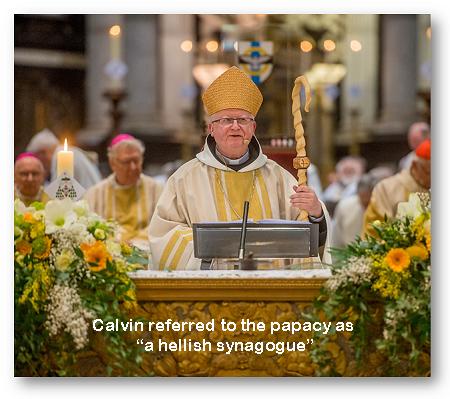
Obnoxious errors existed in the congregation of Pergamum (Rev. 2:12, 13) and the congregation of Thyatira did not practise church discipline properly (Rev. 2:20). Yet neither is disqualified as a ‘false church’. The Lord Jesus warns them, which makes clear that these congregations were travelling down a dangerous road. We may learn from this that one may never acquiesce in errors. We should also learn that patience is required and that we should have an eye for ignorance and weakness. J. Kamphuis is right when he says “that ‘false church’ is an immense word, which is only justified, when a judgment of faith is fixed ... when this has to be said on the basis of God’s Word, and then only in His presence.” The label ‘false church’ is a judgment that may not be passed lightly, it indicates a denaturalization which is the end of a persistent practice of unfaithfulness to what the church of Christ ought to be.
This judgment of faith was passed during the Secession and the Liberation, but not before it was clear that there was a persistent continuation on a sinful road! It was passed when it was necessary to legitimize the act of “separating oneself” (cf. BC art. 28) from a changed church community.
Obedient Faithfulness←⤒🔗
If we cannot simply refer to all church communities outside of our own churches as ‘false churches’, the question arises: what should we say with respect to “ten-times reformed”? What can elders say to a church member who wants to join another church? Here too, I would like to take my starting-point in what article 29 says about the church of Christ. In doing so I wish to take note of the idea of faithfulness in church gathering (or ‘instituting’ together with Christ), an idea which Schilder emphasised. I find this idea more useful than the designations ‘more pure’ and ‘less pure’. I do admit that what Douma wants to say with ‘pure’ and ‘less pure’ makes sense in view of reality. Trimp may be right when he says that the Westminster Confession used these designations for local churches within a church federation. What I find particularly helpful in the Westminster Confession is that it takes note of the difference in ecclesiastical faithfulness when it says:
And particular churches, which are members thereof, are more or less pure, according as the doctrine of the gospel is taught and embraced, ordinances administered, and public worship performed more or less purely in them.4
Difference in faithfulness is the issue in what is said in Revelation about “the seven congregations.”
I think this can be of help in analyzing the complicated situation of our day and age. Schilder teaches us not to think ‘statically’ about the church and her marks. Every church community is subject to the norm of Christ. Thus, Trimp speaks of a “serious search” and of “recognizing faithfulness to the norm.” Article 29 makes clear that this faithfulness to the norm is characteristic for the true church when it says in summary:
In short, it governs itself according to the pure Word of God, rejecting all things contrary to it and regarding Jesus Christ as the only Head.
Our choice for a certain church should be determined not by personal motives (atmosphere, the experience of faith, etc.) but by what our confession says about Christ’s church on the basis of Scripture. It is a question of obedient faithfulness to what characterizes the church of Christ: the practice of pure preaching, the pure administration of the sacraments and the correct administration of church discipline. We ought to assess this obedient faithfulness and this will have to determine our choice!
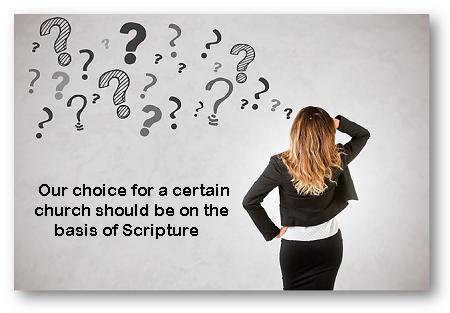
In Closing←⤒🔗
J. W. van der Jagt has remarked “With the opposites ‘true’ and ‘false’ the confessions have not given us ... a scheme, in which the whole ecclesiastical world of all ages can be classified.” It is true, this scheme does not help us with our ten-times-reformed. However, this does not mean that article 29 is no longer relevant when it comes to the various churches that exist today! It teaches us to speak normatively (on the basis of Scripture) about our choice for a particular church by making clear what characterizes the church of Christ and where this church may be found. Thus, it helps us to take our responsibility in our divine calling to be a member of that church (cf. art. 28).
If we speak of the church at this level, we will not be ‘liberated-reformed’ because we have received so much in these churches and have confessed our faith there (as Douma says), but because these churches, by the grace of God, have, up until today, ‘maintained’ what article 29 considers characteristic for the true church. We recognize in these churches the faithfulness to the norm in gathering with Christ and thus we know that in these churches we meet the catholic church of BC art. 27.
Trimp is right when he says that we cannot cover the “ten-times-reformed” issue with the terms ‘true’ and ‘false’ in article 29. However, we can use the approach which he refers to as “faithfulness to the norm.” This allows us to use terms such as ‘faults’, ‘weaknesses’, and ‘dangers’ without having to use the words “the false church.” When visiting those who intend to join another church community, elders will not need to be stuck for words nor do they need to have a “quick and easy phrase” (“we are the true church and the rest are false”). Instead, they can point to the obedient faithfulness which characterizes Christ’s church. Decisive is not their personal preference but whether these believers assemble according to the Word of Christ and whether they ‘maintain’ all that Christ has commanded with regard to preaching, sacraments, and discipline.
Faithfulness←↰⤒🔗
In discussions with the Christelijke Gereformeerde Kerken (CGK) and the Nederlands Gereformeerde Kerken (NGK) this faithfulness to the norm has been the bottom issue. Our churches have acknowledged the CGK because we have recognized that they seek to be faithful to the norm, even if there are differences in church practice. Our churches have problems in coming to unity at a national level with the NGK on account of the same issue.
Schilder taught us that locally there can be but one church of Christ. I think he is right if this is understood to mean that Scripture does not allow two separate churches of Christ to exist in one and the same place. After all, Christ is not divided (1 Cor. 1:13). His church is one. This is the truth of the “ecumenical desire” so strongly emphasized by Schilder. However, that which Scripture forbids, can occur unfortunately. We should not beautify this as A. Kuyper did by considering this the “wealth” of the church or “part of her development.” We should continue to see this as a guilty brokenness and at the same time a mandate to persevere in seeking each other out and eventually finding each other, in order to be church of Christ together!
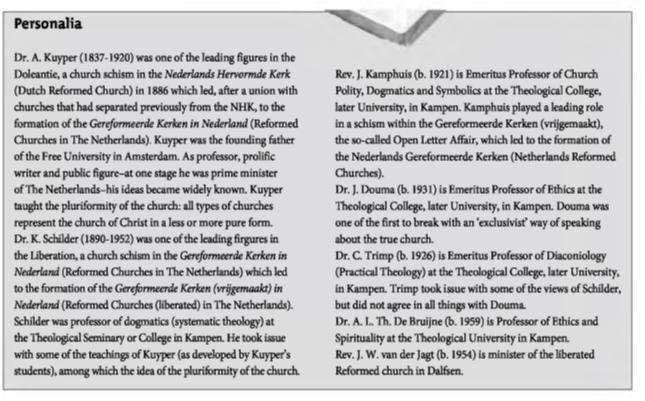
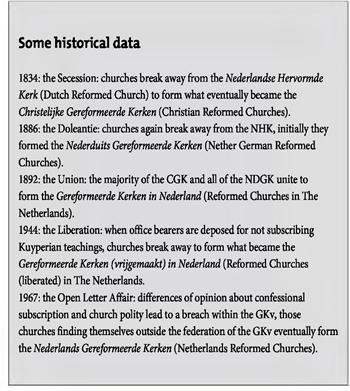

Add new comment